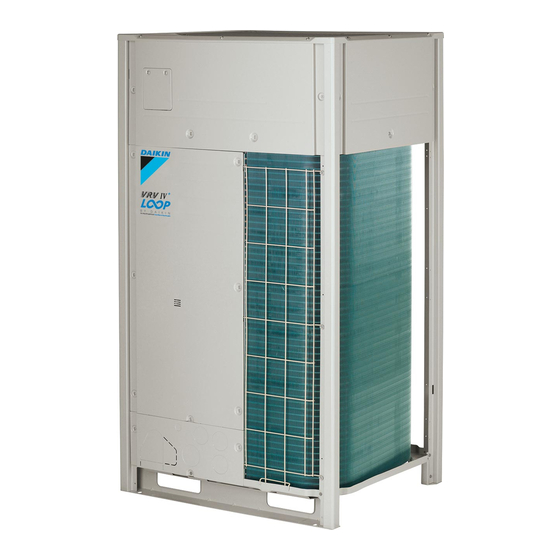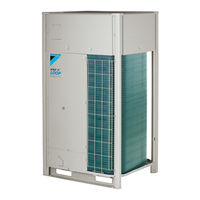
Daikin VRV IV+ Manuals
Manuals and User Guides for Daikin VRV IV+. We have 6 Daikin VRV IV+ manuals available for free PDF download: Service Manual, Installer And User Reference Manual, Installation And Operation Manual
Daikin VRV IV+ Service Manual (404 pages)
Table of Contents
-
Other Symptoms170
-
Components172
-
4-Way Valve172
-
Main 4-Way Valve172
-
Sub 4-Way Valve179
-
Compressor185
-
Crankcase Heater198
-
Current Sensor202
-
Expansion Valve204
-
Fan Inverter PCB213
-
Inverter PCB228
-
Main PCB243
-
Noise Filter PCB253
-
Oil Return Valve258
-
Plate Work271
-
Reactor288
-
Thermistors299
Advertisement
Daikin VRV IV+ Service Manual (200 pages)
Table of Contents
-
A3P27
-
A6P27
-
Pcb A6P51
-
Components77
-
4-Way Valve77
-
Compressor82
-
Inverter PCB99
-
Main PCB106
-
Noise Filter PCB110
-
Oil Return Valve112
-
Plate Work118
-
Reactor123
-
Thermistors128
Daikin VRV IV+ Service Manual (476 pages)
Brand: Daikin
|
Category: Heating System
|
Size: 70 MB
Table of Contents
Advertisement
Daikin VRV IV+ Installer And User Reference Manual (176 pages)
Brand: Daikin
|
Category: Heating System
|
Size: 8 MB
Table of Contents
-
General8
-
Electrical11
-
For the User17
-
General18
-
Operation26
-
Relocation46
-
Disposal47
-
Configuration122
-
To Use Mode 1125
Daikin VRV IV+ Installer And User Reference Manual (168 pages)
Table of Contents
-
-
-
-
-
8 Commissioning
108 -
11 Disposal
122 -
For the User
136 -
-
System Layout137
-
-
16 Operation
141-
Operation Range141
-
Advertisement





